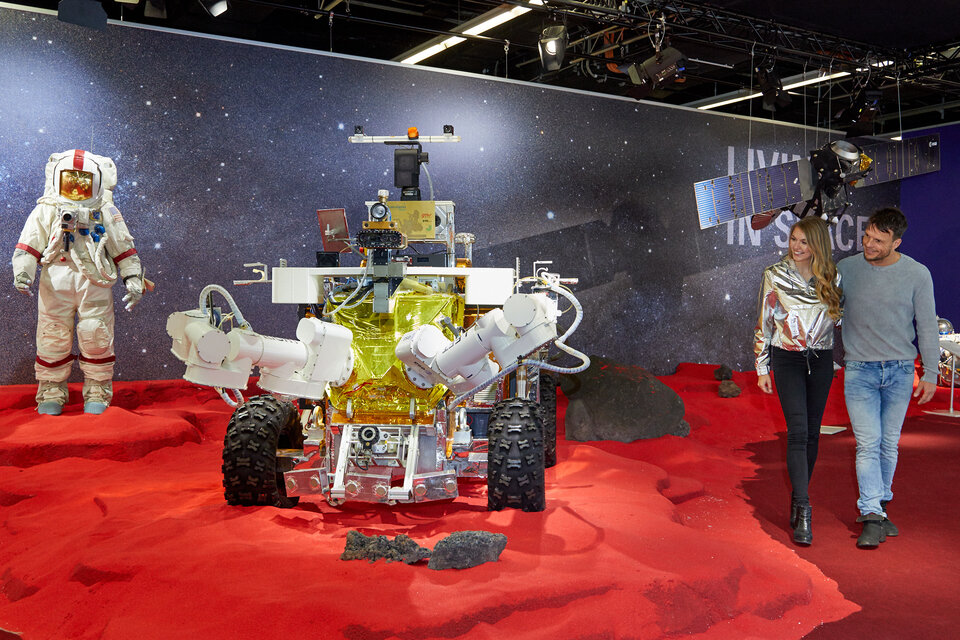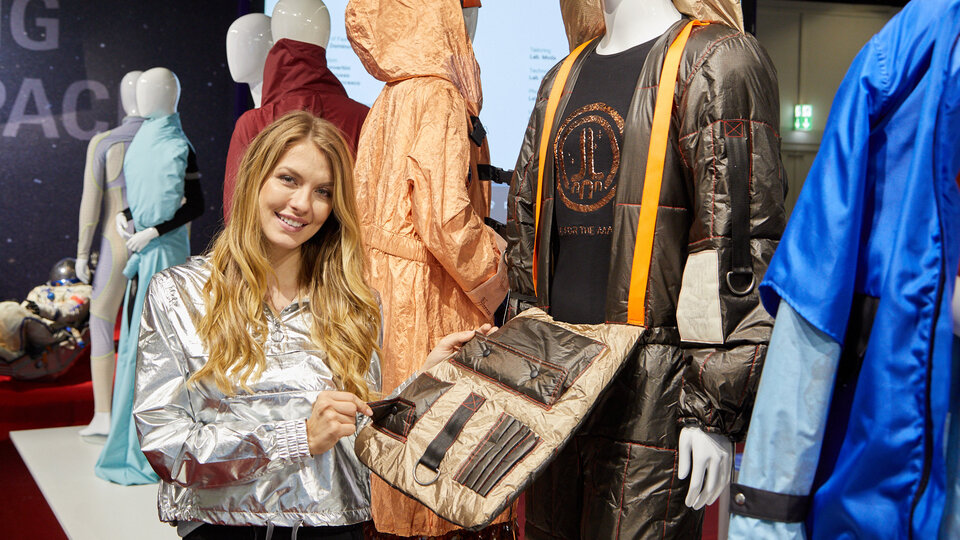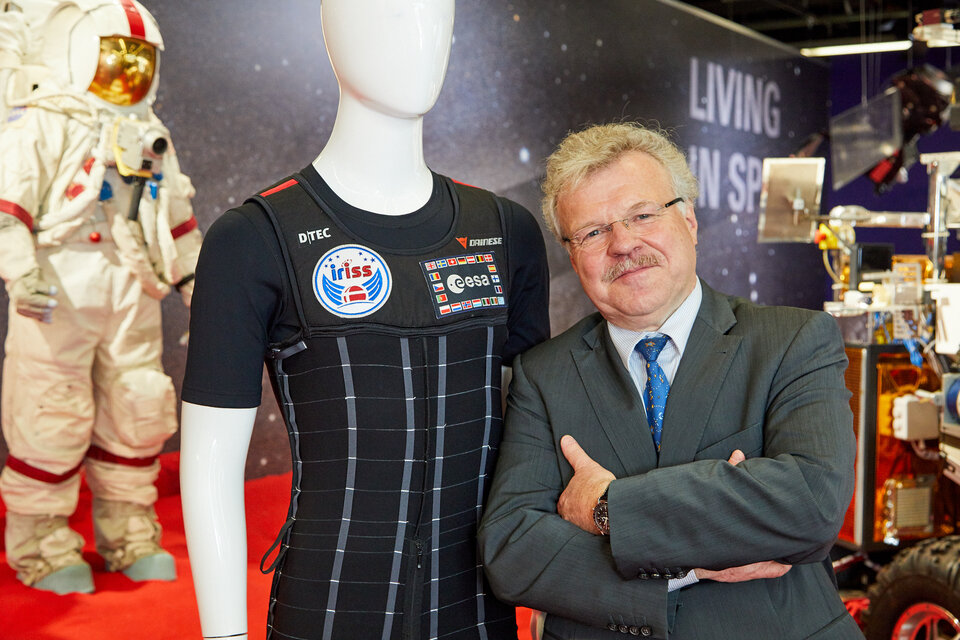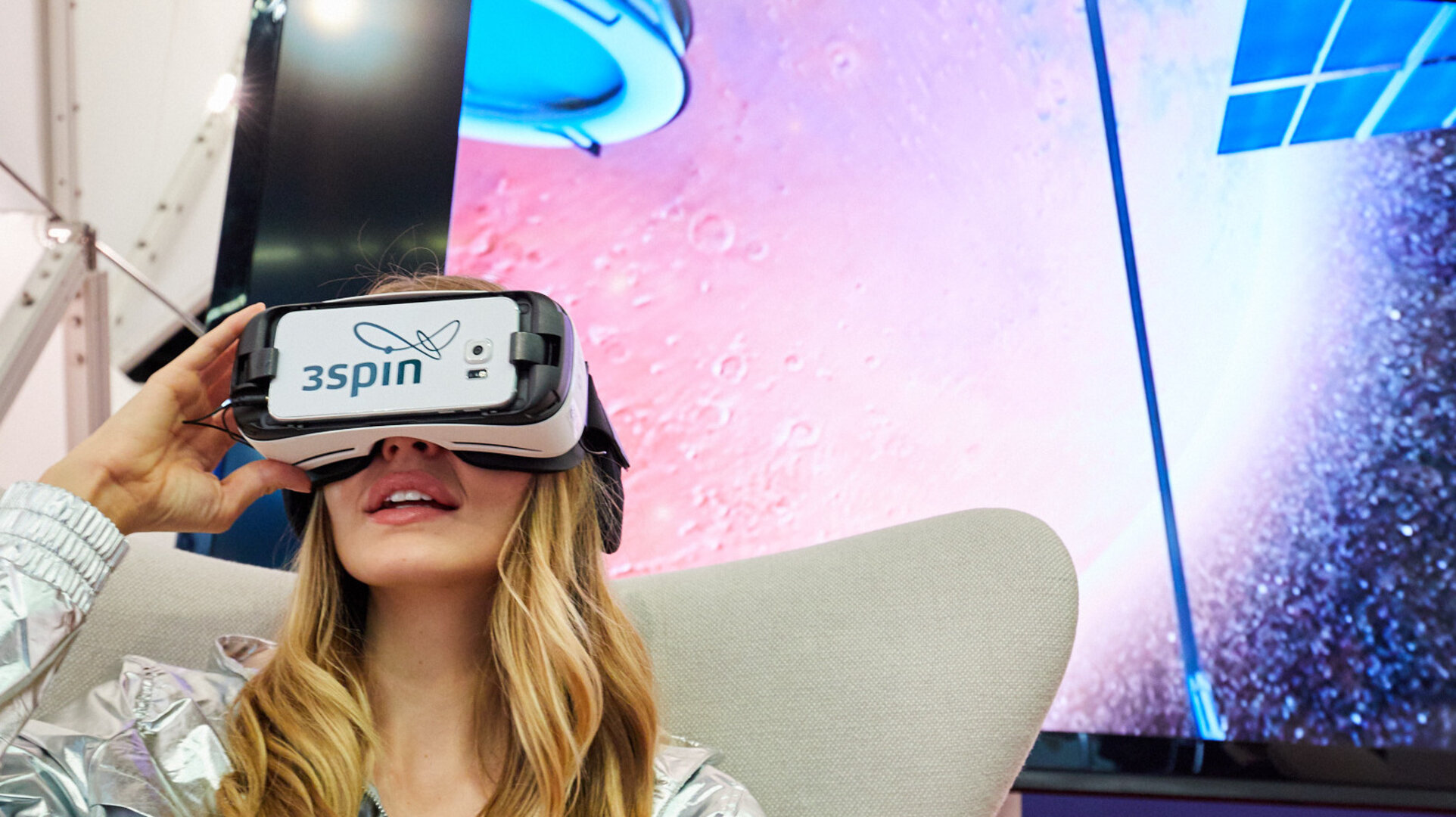Living in space and back to Earth
Nutrition, mobility, fashion and living: innovation in technical textiles is necessary to make settlements in space possible. When used down here on Earth, it opens up a new set of opportunities in our daily lives.
Examples are being shown in the Living in Space exhibition at this year’s Techtextil und Texprocess fair at the Messe Frankfurt in cooperation with ESA and DLR German Aerospace Center.
On display are materials and technologies in the Material Gallery, ideas for new architectures in space by Dutch architect Ben van Berkel, space-inspired fashion designs and and a prototype Mars rover.
Visitors can even take a journey through space to Mars via virtual-reality glasses.

“At the Living in Space exhibition, visitors can see examples of textile materials and processing technologies in an application-oriented setting,” explains Michael Jänecke from Messe Frankfurt.
“In cooperation with our partners and exhibitors, we have created an informative and entertaining area, the like of which has never been seen before at Techtextil and Texprocess.”
Given that technical textiles today can be found in almost every sphere of human life, the materials and processing technologies shown are oriented towards applications related to architecture, civilisation, clothing and mobility.

Another major goal is to show the potential that space technology and materials have for innovative developments within technical textiles here on Earth.
For example, the highly resistant fabric Nomex used in astronauts’ suits has turned out to provide excellent protection to steel mill workers in the form of modern undergarments designed specifically to cope with the extreme temperatures.
Started by ESA´s Swedish technology transfer broker, this spin-off has already led to a prototype.
“These things show how we can use space technology on the ground, and to change society,” commented ESA astronaut Christer Fuglesang at the presentation of the undergarment.

Also in fashion, space technology and materials have resulted in novel wearable solutions. This was proven during last year’s ESA-sponsored “Couture in Orbit”, where stretch sensors, printable antennas and smart fabrics were used by five European design schools in novel intelligent clothing.
One design took advantage of a stress sensor, which was used by Italian astronaut Samantha Cristoforetti to measure her blood flow from the brain to the heart as part of the Drain Brain experiment on the International Space Station. On Earth, the technology was used in a dress design to measure people’s posture, their movements, and how wearers walk, run or sit to improve their health.

Another design used the movement tracker developed by Johan Sports, a start-up from ESA`s incubation centre in the Netherlands.
Combining satnav technology coupled with an accelerometer and a gyroscope, it is today used by several football teams to record the movements of their players up to 100 times a second.
The same tracker was added to a garment design to inflate an airbag in the event of a fall, providing intelligent safety for extreme-sport athletes and the elderly.
Interested in seeing how space can be beneficial for your business?
Join us at the Living in Space area in hall 6.1 and talk to ESA’s technology transfer brokers who are experts in integrating innovative space technologies into the most diverse range of industries.
The Living in Space exhibition is on show during this year’s Techtextil und Texprocess in Frankfurt, 9–12 May.
Technology transfer from space

Started 13 years ago, ESA’s technology transfer programme has now grown to the world’s largest space-related entrepreneurship and technology transfer network.
By the end of 2017, there will be 19 ESA Business Incubation Centres at 35 locations supporting 140 start-ups yearly, all developing new applications for terrestrial use based on space spin-offs.
More than 400 new companies have already been fostered, with thousand of new jobs. In addition, a network of 16 technology brokers across Europe supports bringing space technology down to Earth.
For more information, please contact:
ESA Technology Transfer Programme Office
European Space Agency, ESTEC
Email: ttp@esa.int
Tel: +31 71 565 6208
Fax: +31 71 565 6635


